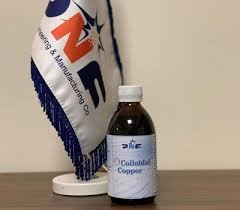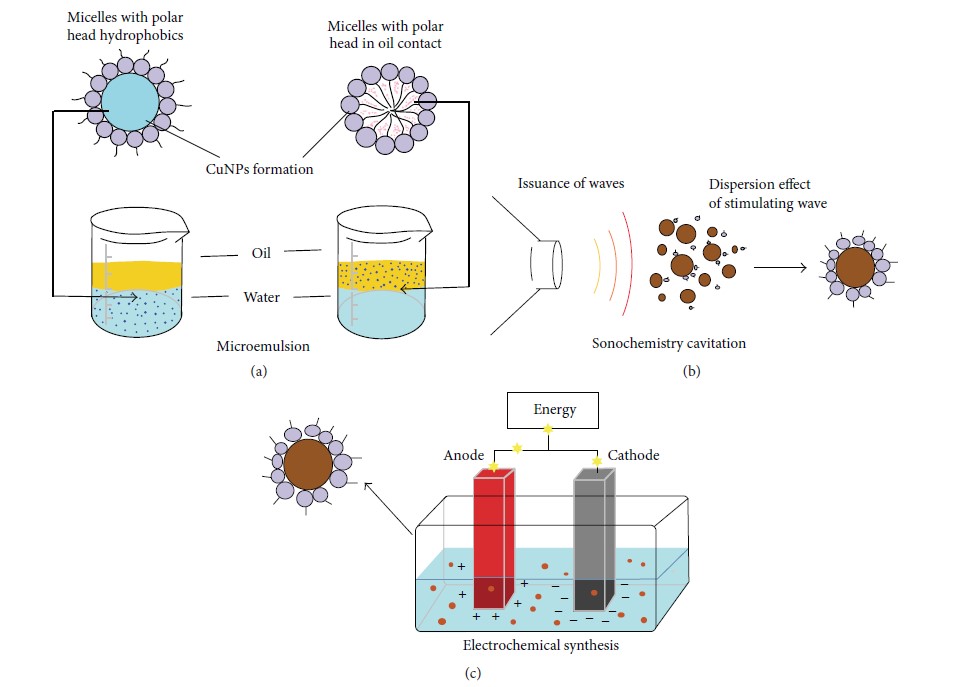
Nano Copper Suspension
Nano copper suspension refers to the suspension of nanoscale copper particles in a liquid, typically produced using various chemical or physical methods. Due to their small size, nano copper particles possess unique physical and chemical properties that make them highly beneficial in various applications, including electronics, chemical catalysts, and pharmaceuticals. These suspensions can be utilized as antibacterial agents, thermal and electrical performance enhancers, as well as in the paint and coating industries.
Controlling the size and distribution of particles in nano copper suspension is crucial, as these factors directly impact the efficiency and final characteristics of the material.
Nano copper and copper oxide suspensions have specific properties that make them applicable across different industries.

Antimicrobial Properties: Nano copper and copper oxide exhibit strong antibacterial properties, making them suitable for use in hygiene and medical products. This feature helps reduce infections and improve overall public health.
High Electrical Conductivity: Nano copper possesses very high electrical conductivity, which makes it a key material in the electronics industry. This property is utilized in the production of electronic components such as transistors and batteries.
Catalytic Properties: Nano copper oxide acts as an effective catalyst in various chemical reactions, which makes it suitable for using in the chemical and oil industries.
Chemical Stability: The suspension of nano copper and copper oxide demonstrates high stability under various environmental conditions, ensuring greater durability in industrial applications.
Optical Properties: Nano copper particles have unique optical properties that can be applied in sensors and optics. These properties are dependent on color changes and light absorption. The optical characteristics of nano copper and copper oxide suspensions are particularly noteworthy due to the nanoscale size of the particles and their specific structure. These nanoparticles can scatter and absorb light in various ways, leading to unique optical features.
The application of optical properties is primarily in optical technologies, including their use in lamps and laser devices to enhance efficiency. Additionally, these properties are utilized in imaging systems for medical imaging techniques, aimed at improving image quality.
Nano copper suspension has a variety of applications across different industries. Below are some of these applications along with brief descriptions of each:
Due to their antibacterial and antifungal properties, copper nanoparticles are used in the production of drugs and medical equipment. These nanoparticles can reduce infections and accelerate wound healing. Additionally, copper is employed in producing disinfectant coatings for medical instruments.

Due to their high electrical conductivity, copper nanoparticles are used in manufacturing electronic components such as transistors and batteries. This feature enhances efficiency while reducing device size. Furthermore, copper serves as a key material in producing electronic sensors.

Copper is used as a disinfectant agent in personal care products such as soaps and sanitizers. This property helps reduce infections and diseases while providing greater safety for consumers.

Copper nanoparticles are utilized in the painting industry to produce stable and attractive paints. These nanoparticles add antibacterial properties to paints while increasing their longevity. Additionally, copper can be used to create specialty paints with unique optical properties.

Copper acts as a catalyst in various chemical reactions, increasing reaction speeds. This feature is particularly important in the chemical and petroleum industries as it reduces the time required for reactions.

The company “Payam Avaran Nano Fanavary Fardanger” (PNF) was established with the aim of developing improved products using nanotechnology. This company has pursued various projects in the field of producing Nano metals in the form of powder, colloids, or suspensions using innovative methods and has succeeded in producing high-quality Nano products. Currently, PNF offers a wide range of Nano metal powders, colloids, and suspensions, as well as metal oxides with high purity based on customer requests.